There is just something about a colorful aquarium with little fish, green plants, and small decorations that has you staring at it for a long while.
The aquarium‘s look enhances further with lush, vibrant plants close to the surface and on the bottom.
Creating beautiful carpet plants in your fish aquarium can do a lot more than just improving the tank’s aesthetic value.
It can also provide grazing, stimulate vast and open fields, and cover shrimp and other fish.
Selecting the right type of carpet plant is the tricky part here; some carpet plants grow without much hassle, while others require a lot more effort and investment from the grower’s side.
However, once you get the hang of it and know which plant works best for your little ecosystem, you notice the extra work was well worth the effort.
Table of Contents
What are Some Easy Carpet Plants?
Carpet plants that are the most common, easy-to-manage, and suitable for beginners as well as experienced individuals. They include Dwarf Hairgrass, Micro Sword, Monte Carlo, Marsilea Hirsuta, Glossostigma, Shoreweed, Pygmy Chain Sword, Staurogyne Repens, and Java Moss.
8 Easy Aquarium Carpet Plants
Dwarf Hairgrass
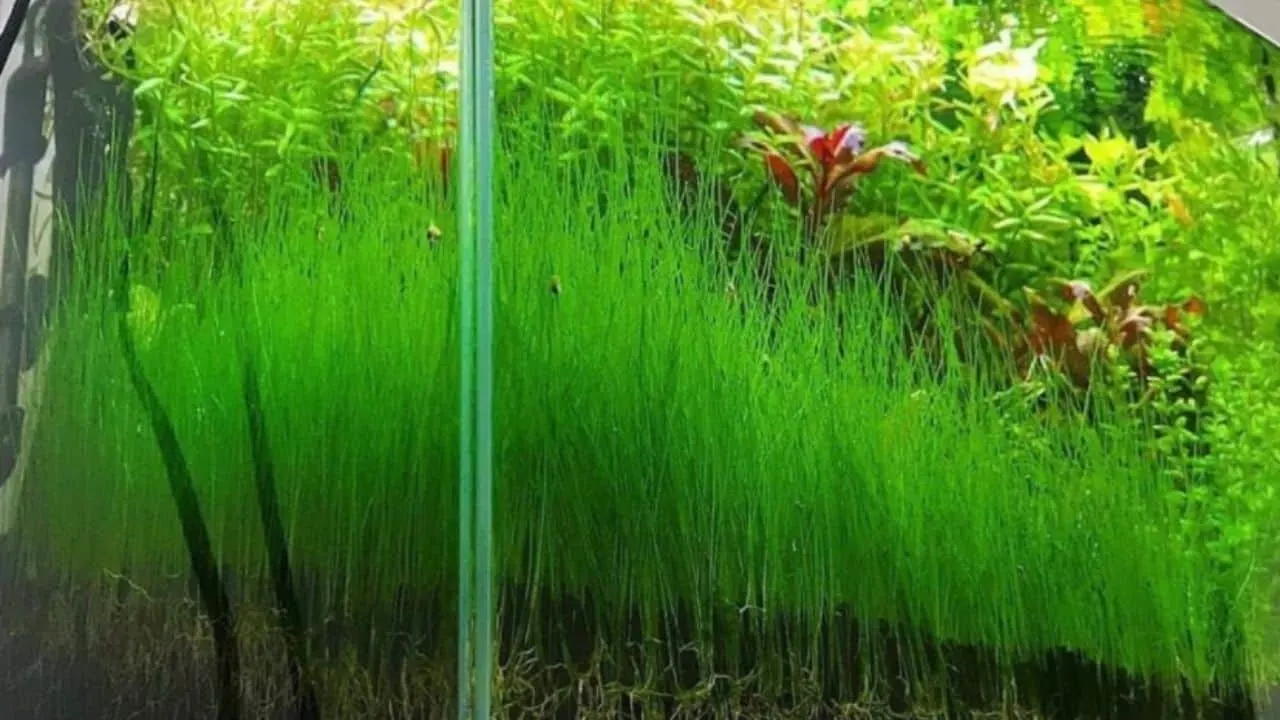
Photo Credit: @aquascapegods on Instagram!
Scientifically known as Eleocharis Parvula, the Dwarf Hairgrass is an easy-growing aquarium plant.
Its light and nutrition requirements are moderate, and carbon dioxide supplementation is optional. Additionally, it has a fast growth rate, which may require you to prune it often.
The Dwarf Hairgrass plants are grass-like with green hair-like thin strands, hence the name. They are adaptable and hardy and do pretty well in moderate light.
This plant is primarily available in potted clusters, but you can also split the Dwarf Hairgrass at home into 4 or 6 strands sections.
I recommend a grid pattern for planting them for a higher success rate. Besides that, go for uniform and even planting on a commercial substrate; this will help create your preferred green carpet in a relatively shorter time.
Please remember that it grows fast; thus, you must trim it before it entirely covers the tank’s bottom, making it look irregular.
- Scientific name: Eleocharis Parvula
- Common name: Dwarf Hairgrass
- Light requirements: moderate
- Nutrition: moderate
- Growth rate: fast
- Care: easy
- Carbon dioxide supplementation: optional
Micro Sword
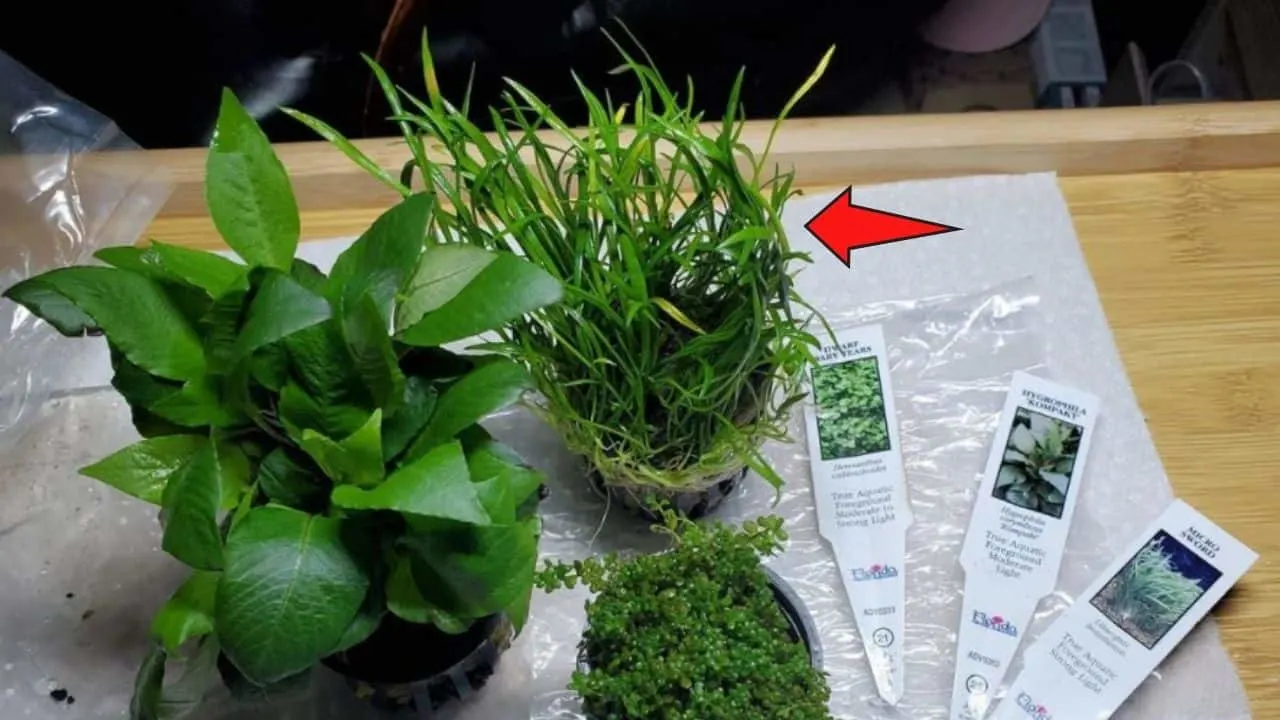
Photo Credit: @jaylie_aqua_ on Instagram!
Next up is Micro Sword, botanically known as Lilaeopsis Novae-zelandiae. Fortunately, its care level is a lot easier than its name.
With moderate to high light and moderate feeding, it grows at a medium, manageable rate. Carbon dioxide supplementation is optional when growing it.
Micro Swords are green grass-like plants that are excellent for making an eye-catching aquarium.
Slightly thicker than Dwarf Hairgrass, they have a shiny, glossy look that reflects light. Also, they form great foregrounds for fish tanks.
These beauties grow pretty fast under bright lights and propagate slowly in low-tech water tanks. Despite this, they are fairly easy to manage and an excellent aquatic plant choice for greenhorns.
- Scientific name: Lilaeopsis Novae-zelandiae
- Common name: Micro Sword
- Light requirements: moderate to high
- Nutrition: moderate
- Growth rate: moderate
- Care: easy
- Carbon dioxide supplementation: optional
Monte Carlo
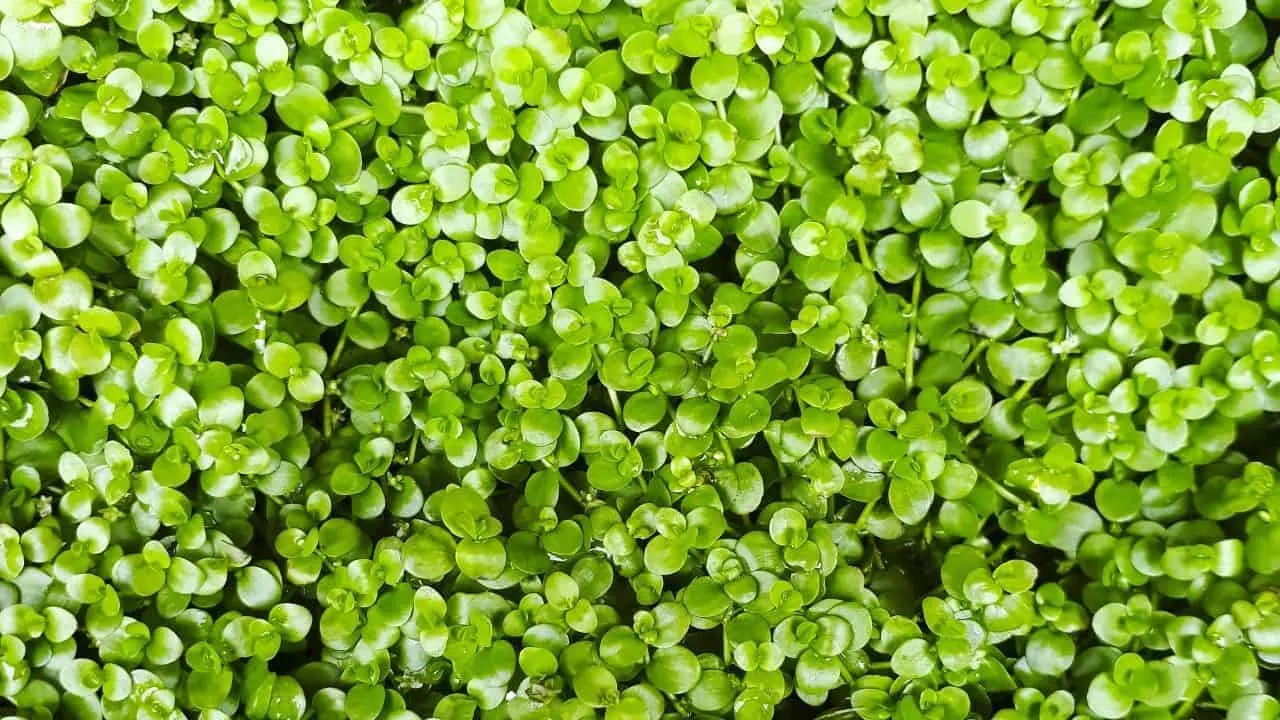
Another exceptional carpet plant choice is Monte Carlo. They are called Micranthemum Tweediei scientifically and considered easy to nurture.
They grow up to 1 to 2 inches (2.5 to 5 cm) and need moderate light and no carbon dioxide supplementation. Another name for this plant is New Large Pearl Grass.
This plant is a relatively newer addition to aquarium carpet plants.
Monte Carlo was discovered years ago alongside a river in Monte Carlo city. These plants are rounded and light green, making the perfect aquarium carpeting accent.
It requires medium light and fine sandy substrates and can do well even without carbon dioxide supplementation.
When trimming for the first time, be extra careful since they need time to adapt to this.
Potted clumps of this plant are available at online vendors and pet stores. If buying for a small aquarium, a pot or two will suffice.
- Scientific name: Micranthemum Tweediei
- Common name: Monte Carlo
- Light requirements: moderate
- Nutrition: moderate
- Growth rate:
- Care: moderate
- Carbon dioxide supplementation: not needed
Marsilea Hirsuta
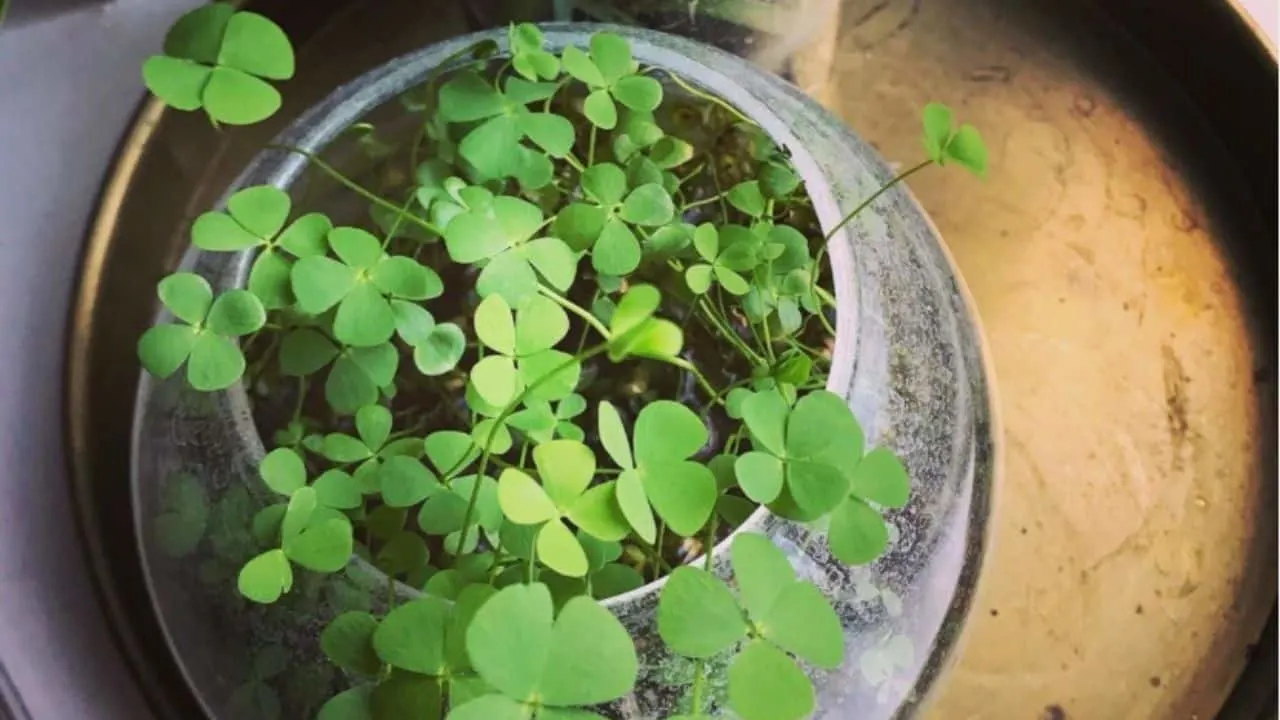
Photo Credit: @darth_scaper on Instagram!
Marsilea Hirsuta is one of the easiest and most beginner-friendly plants. Marsilea Hiluta’s got a growth rate of slow to medium, depending on the amount of light it is exposed to.
The plant likes low to medium light, and carbon dioxide supplementation is optional.
Native to the Australian lands, Marsilea Hirsuta grows to about 4 inches (10 cm) when put in an environment similar to its natural one.
They are freshwater plants; therefore, ensure that you keep your tank clean for this to flourish.
Marsilea Hirsuta plants are dark green and have a four-lobed leaf structure. Due to this, they are also called fascinating dense carpet makers.
Highly adaptable, they quickly become beginners’ favorite aquarium carpet plant.
The Marsilea Hirsuta plantlets are available in cups in the markets. Once you take the plant out of its cup, wash it thoroughly, and split it into some portions using scissors.
For effective planting, I suggest taking at least an inch from Marsilea Hirsuta’s rhizome section. After that, just insert the plant into a suitable substrate.
Once the transition period passes, Marsilea Hirsuta develops leaves in various shapes, form runners, and sizes. The plant then spreads rapidly all along the substrate, creating a gorgeous carpet.
It is an excellent choice for those who like low-maintenance plants. Trim it occasionally for a healthier look.
- Scientific name: Marsilea Hirsuta
- Common name: Marsilea Hirsuta
- Light requirements: low to medium
- Nutrition: low to moderate
- Growth rate: low to moderate
- Care: moderate
- Carbon dioxide supplementation: optional
Glossostigma
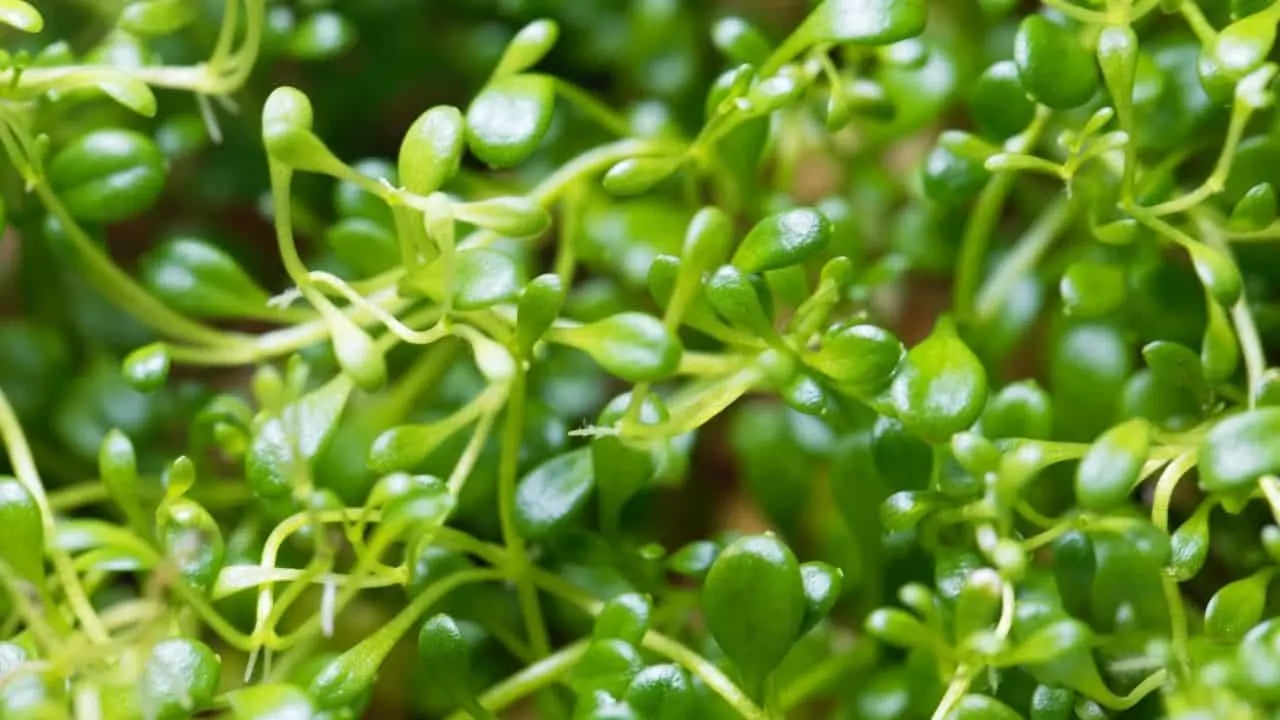
Botanically known as Glossostigma Elatinoides, Glossostigma is another wonderful beginner-friendly plant.
It requires moderate care, which includes medium to high light and moderate feed. It has a fast growth rate and manages to thrive whether you supplement it with carbon dioxide or not.
Glossostigma is a native of New Zealand, and since the 80s, it has been a famous carpet plant.
Currently, it has gained popularity as a front-maker for fish aquariums due to its appropriate characteristics and pleasing appearance.
It has small, tongue-like leaves that are bright green. They form bubbles that look like pearls, creating visually appealing results.
Glossostigma is readily available in pots, with numerous plants in clumps. To propagate or plant, split the individual plant into sets of roots and leaves.
Plant each set uniformly into an appropriate substrate. Please remember to bury the roots properly for successful planting.
This aquarium carpet plant grows fast, and thus, it requires frequent trimming. Get rid of the overgrown parts to keep your aquarium neat and pretty.
- Scientific name: Glossostigma Elatinoides
- Common name: Glossostigma
- Light requirements: medium to high
- Nutrition: moderate
- Growth rate: fast
- Care: moderate
- Carbon dioxide supplementation: not needed
Shoreweed
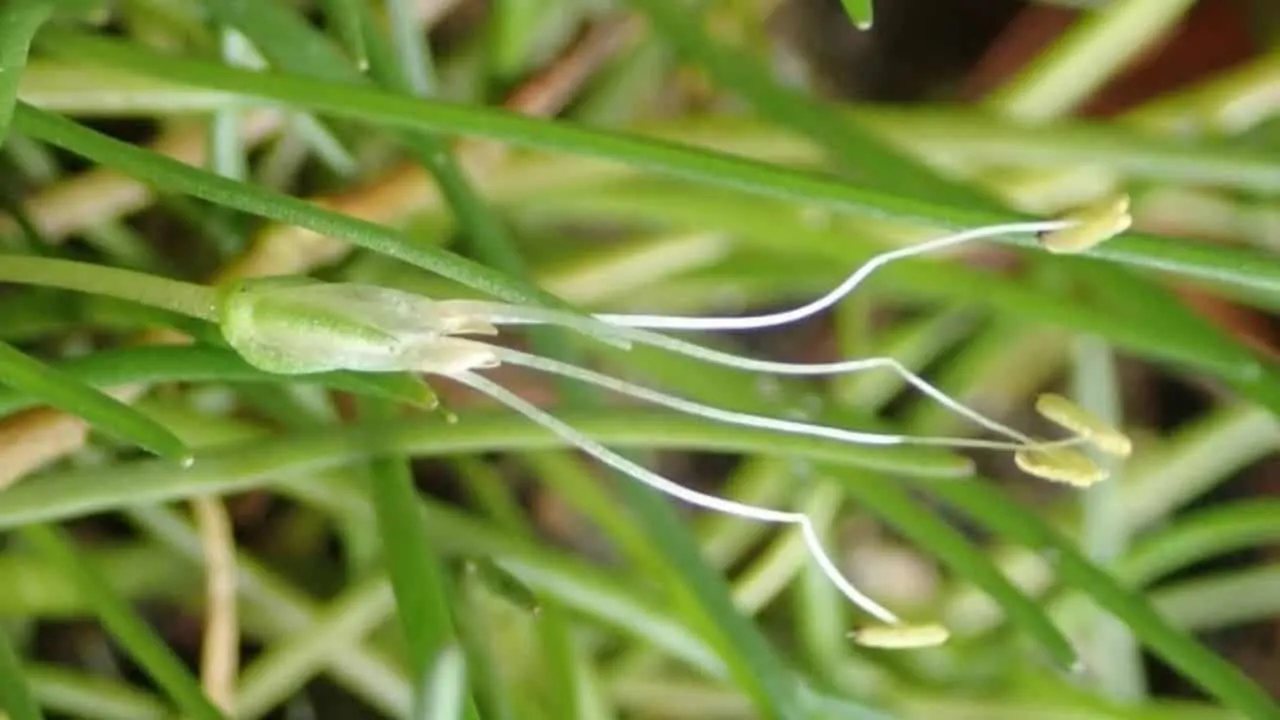
Photo Credit: @sargassum_invasif on Instagram!
Shoreweed’s scientific name is Littorella Uniflora, and it hails from the lands of Europe and North America.
It is reasonably easy to grow and maintain, requiring medium light and nutrition. It has a slow growth rate and can manage without carbon dioxide supplementation.
American Shoreweed or Shorewood is an accommodating and hardy plant known for making an excellent aquarium carpet plant.
It is often found growing alongside wild lakeshores of North America and Europe.
These plants have sharp green leaves, resembling grass. One of its most desirable features is that it is not very demanding.
Shoreweed manages even with little light and nutrients. However, if you prefer shiny, smooth carpets, moderate lighting and care are advisable.
Additionally, trim only when needed, keep the water tank clean, and remove dead leaves routinely.
Plant Shoreweed the conventional way; simply take its leaves and roots, dip them into a good substrate and go with the grid pattern.
You may use tweezers to handle the sensitive leaves.
- Scientific name: Littorella Uniflora
- Common name: Shoreweed
- Light requirements: moderate
- Nutrition: moderate
- Growth rate: slow
- Care: easy
- Carbon dioxide supplementation: not needed
Pygmy Chain Sword
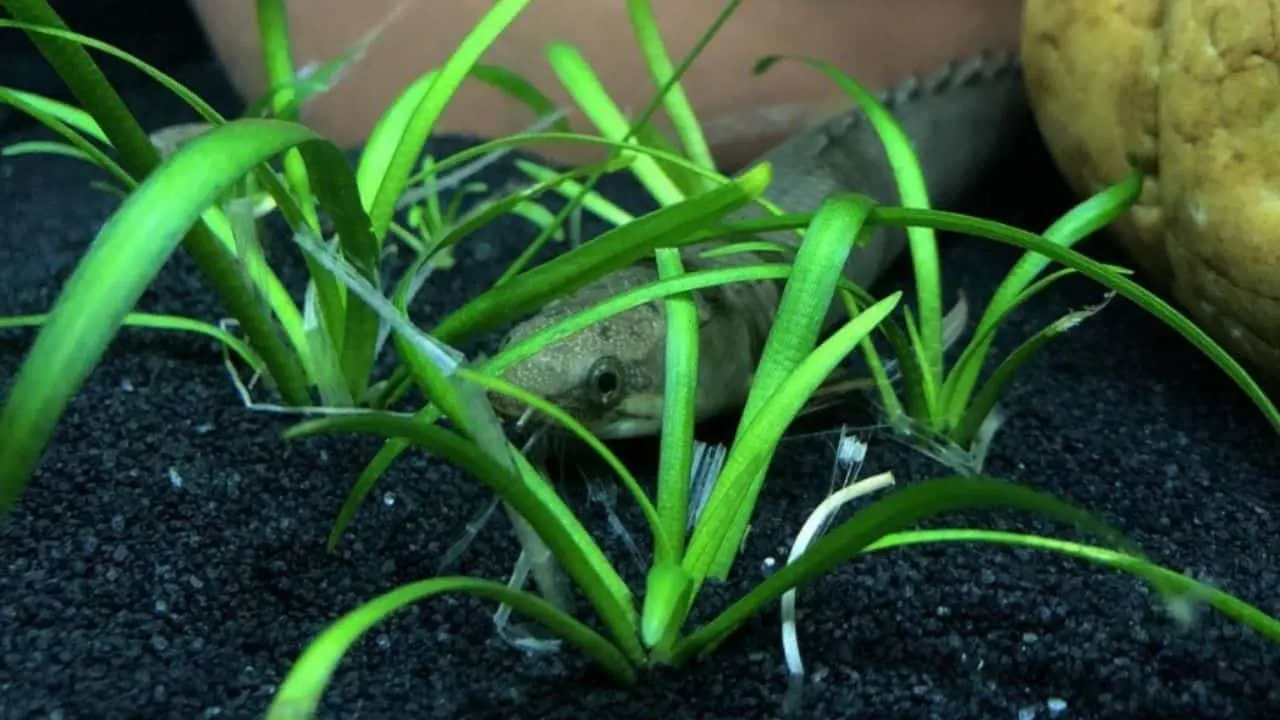
Photo Credit: @ks_aquatics on Instagram!
Botanically known as Echinodorus Tenellus, Pygmy Chain Sword is pretty easy to grow. Since it grows fast, it needs moderate nutrition and lighting.
Like many similar plants, carbon dioxide supplementation is optional.
Pygmy Chain Sword is similar to Hairgrass, only it has feather-like leaves instead of pointy. It forms a bushy, coarse look, which often has people staring.
It has quite an interesting color behavior. Under medium light, Pygmy Chain Sword’s leaves turn green, but as the light intensity increases, it becomes golden.
It can also achieve purple and red colors in the right settings; this creates a stunning foreground.
- Scientific name: Echinodorus Tenellus
- Common name: Pygmy Chain Sword
- Light requirements: moderate
- Nutrition: moderate
- Growth rate: fast
- Care: moderate
- Carbon dioxide supplementation: non-compulsory
Staurogyne Repens
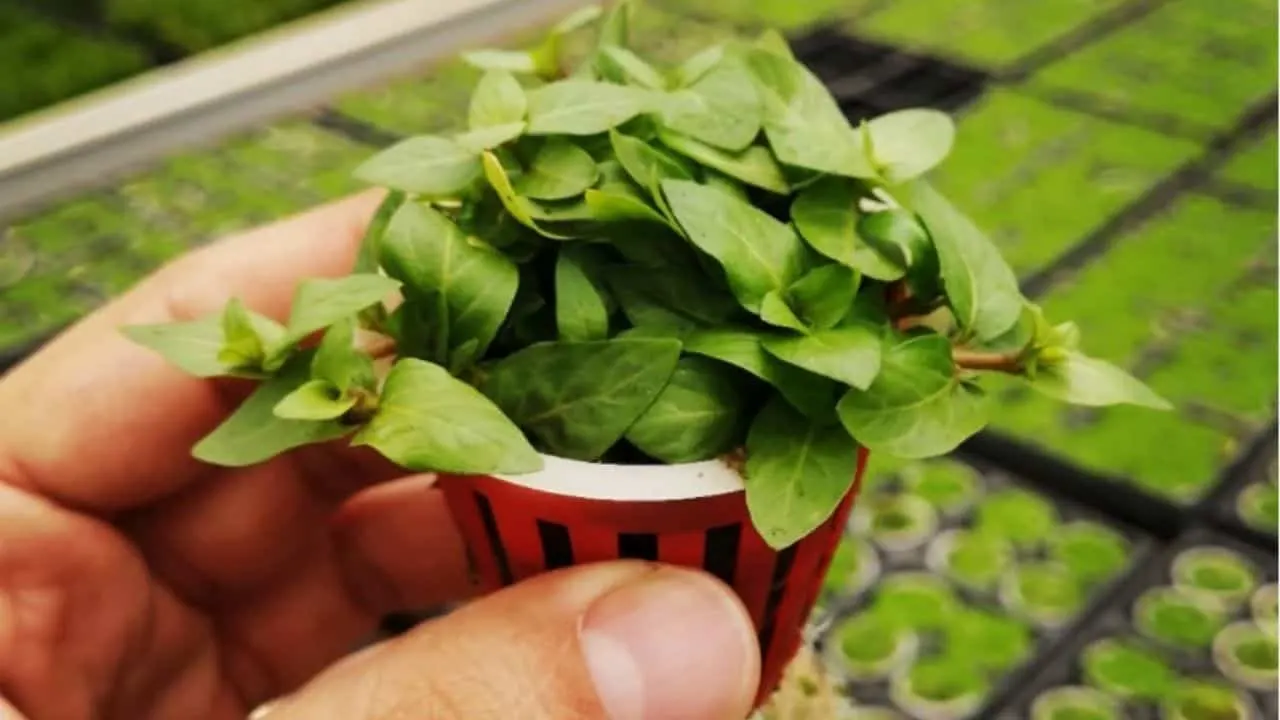
Photo Credit: @acuaflora on Instagram!
The botanical name of Staurogyne Repens is similar to its regular name. It has a simple care guide and needs medium light and feeding.
It is a reasonably manageable plant since it grows slowly. Again, carbon dioxide supplementation is optional.
Staurogyne Repens is another excellent choice for aquarium carpet plants. Due to its slow growth rate, it does not need to be trimmed frequently.
A little trick to growing them well is to plant them as flawlessly as you can. Take about 30 stems to plant for a bigger tank (10-gallon), and the 1:3 ratio is perfect for other water tank sizes.
- Scientific name: Staurogyne Repens
- Common name: Staurogyne Repens
- Light requirements: moderate
- Nutrition: moderate
- Growth rate: slow
- Care: easy
- Carbon dioxide supplementation: optional
Why Some Carpet Plants are Difficult to Grow
An aquarium is a tiny but entirely different world. It has its own needs and issues and can only be managed well by those with some experience.
For a few reasons, some plants may suffer while growing in it. Let’s see the prerequisites needed for a flourishing carpet plant aquarium.
Insufficient Light
Most plants need low to high sunlight for performing their vital functions, such as photosynthesis and oxygen release.
This becomes a problem for carpet plants since they are at the aquarium’s bottom-most part, where the least sunlight reaches.
Therefore, set your aquarium in such a way that all plants can receive their fair share of sunlight.
- Plants at the bottom receive little light.
- Plants cannot perform vital functions unless they have excess to sufficient light.
- Set your aquarium in such a way that all plants receive plenty of sunlight.
Tiny Roots
Aquarium carpet plants are known to have small roots. This can lead to inefficient absorption unless they are immersed in fine substrates.
Moreover, for encouraging healthy root growth, use commercial substrates instead of organic ones.
- Aquatic plants have small roots.
- Roots cannot absorb nutrition efficiently.
- Use commercial substrates instead of organic ones.
Inadequate Nutrition
Tiny roots pose a problem if the nutrition provided is not enough. Aquarium carpet plants are often high-demanding.
Therefore, they must be fed regularly to fulfill the plant’s nutritional needs. Moreover, give a pressurized carbon dioxide supply to your carpet plants, so they thrive.
- Insufficient nutrition causes issues.
- They are often high-demanding.
- Provide a pressurized carbon dioxide supply for healthier growth.
Features that Make Beginner-Friendly Carpet Plants
Easy to Grow
It is very common for beginners to have issues developing the aquarium carpet plants due to picking the wrong plant type or using incorrect methods.
Aquarium carpet plants are not difficult to grow and understand, so newbies can have the minimum hassle and are encouraged to continue their newfound fish-keeping quest.
The aquarium carpet plants should be hardy and accommodating in different circumstances to make things significantly easier for the inexperienced.
Furthermore, they should come with a brief care guide for better understanding.
- Issues arise due to picking the wrong plant type or using incorrect methods.
- Plants should be easy to grow and understand so that newbies can grow them without much hassle.
- Ideally, aquarium carpet plants should be hardy and accommodating.
Fast Growing
Waiting for your plant to grow has to be one of the toughest things, especially when you provide it with all it needs.
The waiting process becomes tougher when you are a beginner since you are only starting to find out how everything works.
Faster growing aquarium carpet plants help beginners get their fish tank quickly into its desired form.
However, please note that such plants may require more trimming as compared to slow-growers.
- Fast-growing plants quickly take up your desired aquarium form.
- Fast-growing plants may require trimming more often.
Flexible Substrates
Choosing the right substrate is certainly a tricky job. You can get the highest-quality substrate available, but if your aquarium carpet plants cannot uptake it, the substrate isn’t of much use.
Select the substrate that you think will work best with your plants as well as the fish.
Aquarium carpet plants have small roots; therefore, picking fine and nutrient-rich gravels is your best bet.
If you are new to this, avoid the plants requiring special substrates.
- Choose good-quality and suitable substrates.
- Pick nutrient-rich gravels.
Conclusion
Although all of these carpets plants are easy to grow and visually appealing, I suggest picking the one that goes with your aquarium’s theme best.
Furthermore, ensure that the aquarium plant you’ve chosen is compatible with your fish and can easily grow in your area’s natural climate.

Daniel has been a plant enthusiast for over 20 years. He owns hundreds of houseplants and prepares for the chili growing seasons yearly with great anticipation. His favorite plants are plant species in the Araceae family, such as Monstera, Philodendron, and Anthurium. He also loves gardening and is growing hot peppers, tomatoes, and many more vegetables.


